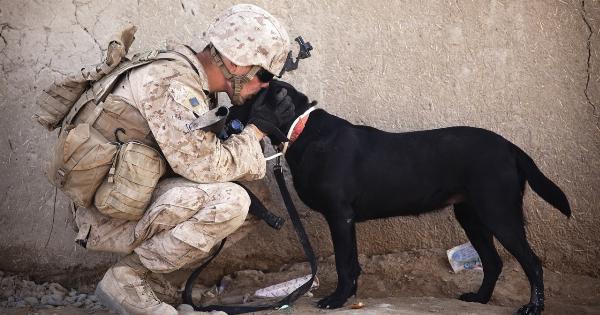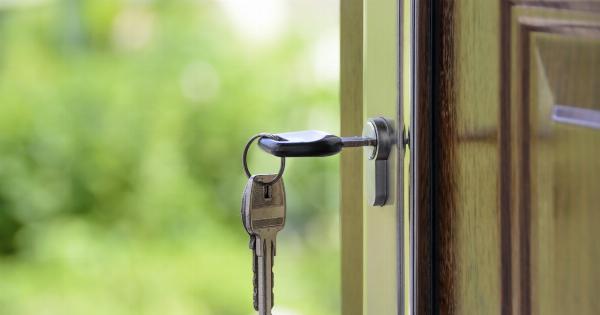An overweight dog is one that exceeds its ideal weight by a significant amount. This can happen due to a variety of reasons, including overeating, lack of exercise, certain underlying health conditions, or a combination of these factors.
Just like humans, carrying excess weight can negatively impact a dog’s overall health and well-being.
Identifying an Overweight Dog
It can sometimes be challenging to determine if your furry friend is overweight, especially since there is no standard weight that applies to all dog breeds.
However, there are a few signs that can help you identify if your dog is carrying extra pounds.
1. Visual Assessment
One way to determine if your dog is overweight is by visually assessing its body condition. Stand above your dog and look down at their body.
If you notice a lack of a defined waistline or if their belly appears rounded or saggy, these could be indications of excess weight.
2. Feeling Their Ribs
Gently run your hands along the side of your dog’s chest area. You should be able to feel their ribs without applying too much pressure.
If you have trouble feeling their ribs or they feel padded with a layer of fat, it could mean your dog is overweight.
3. Monitoring Energy Levels
If you notice that your dog seems less energetic during walks or playtime or gets tired more quickly, it may be a result of carrying excess weight.
Overweight dogs often struggle to keep up with their normal activity levels due to the strain on their joints and overall reduced fitness.
4. Regular Weigh-Ins
Schedule regular weigh-ins for your dog with your veterinarian. They will be able to determine your dog’s ideal weight range based on breed, age, and overall health.
By tracking your dog’s weight over time, you can identify any significant changes and take appropriate action if necessary.
The Dangers of Canine Obesity
Obesity in dogs comes with a range of health risks and can significantly impact their quality of life. Some of the dangers associated with overweight dogs include:.
1. Joint Problems
Excess weight places additional stress on a dog’s joints, which can lead to conditions such as arthritis or worsen existing joint issues. This can result in pain, reduced mobility, and a decreased desire to engage in physical activities.
2. Heart Disease
Overweight dogs are at a higher risk of developing heart-related issues such as hypertension and heart disease. The heart has to work harder to pump blood through the body, leading to potential long-term damage.
3. Diabetes
Obesity increases the risk of developing diabetes in dogs. Just like in humans, diabetes can have severe health consequences for dogs, including difficulty regulating blood sugar levels and potential complications affecting various organs.
4. Respiratory Problems
Excessive weight can put pressure on a dog’s respiratory system, making it harder for them to breathe properly. This can lead to difficulties in exercising or even completing everyday activities.
5. Shortened Lifespan
Multiple studies have shown that overweight and obese dogs have a shorter lifespan compared to dogs maintained at a healthy weight.
The strain excessive weight puts on their bodies and the increased likelihood of developing various health conditions contribute to this reduced lifespan.
Ways to Help Your Overweight Dog
If you’ve determined that your dog is indeed overweight, there are several strategies you can implement to help them shed those extra pounds and improve their overall health and vitality.
1. Consult with Your Veterinarian
Before embarking on any weight loss plan for your dog, it’s crucial to consult with your veterinarian.
They will provide guidance tailored to your dog’s specific needs, taking into account their breed, age, current health condition, and any underlying medical issues.
2. Proper Diet
Switch your dog to a balanced, portion-controlled diet that is appropriate for their breed and size. Avoid feeding table scraps or high-calorie treats, as these can contribute to weight gain.
Your veterinarian can recommend specific dog foods that are formulated for weight loss.
3. Controlled Portion Sizes
Measure your dog’s food portions accurately according to the feeding instructions provided by your veterinarian or the dog food manufacturer. Avoid free-feeding, which can lead to overeating.
Splitting their daily food allowance into multiple smaller meals can help prevent hunger and keep their metabolism active.
4. Regular Exercise
Provide regular exercise opportunities for your dog to burn calories and improve their fitness level. Engage in activities such as daily walks, playtime, or even swimming if your dog enjoys it.
Gradually increase the duration and intensity of exercise sessions as your dog becomes fitter.
5. Interactive Toys and Games
Stimulate your dog mentally and physically with interactive toys and games that encourage movement and engagement. Food puzzles or treat-dispensing toys can make mealtime more engaging while helping to prevent overeating.
6. Avoid Feeding Human Food
Resist the temptation to share your own food with your furry companion, as human food can be high in calories, unhealthy fats, and other ingredients that are not suitable for dogs.
Stick to a nutritious, veterinarian-approved diet for your dog’s weight loss journey.
7. Monitor Progress
Regularly track your dog’s weight and body condition to assess their progress. If there are no noticeable changes or if they continue to gain weight, consult with your veterinarian for further guidance.
They may recommend adjustments to the diet or exercise routine.
8. Patience and Persistence
Weight loss in dogs, just like in humans, takes time and requires consistency. Be patient and persistent in implementing your dog’s weight loss plan.
Celebrate small milestones along the way and stay committed to their long-term health and well-being.
Make Your Overweight Dog Healthy Again
Helping your dog achieve and maintain a healthy weight is essential for their overall well-being and longevity.
By taking the necessary steps to address their weight issues, including proper diet, controlled portions, regular exercise, and monitoring progress, you can ensure your furry friend leads a happier and healthier life.






























